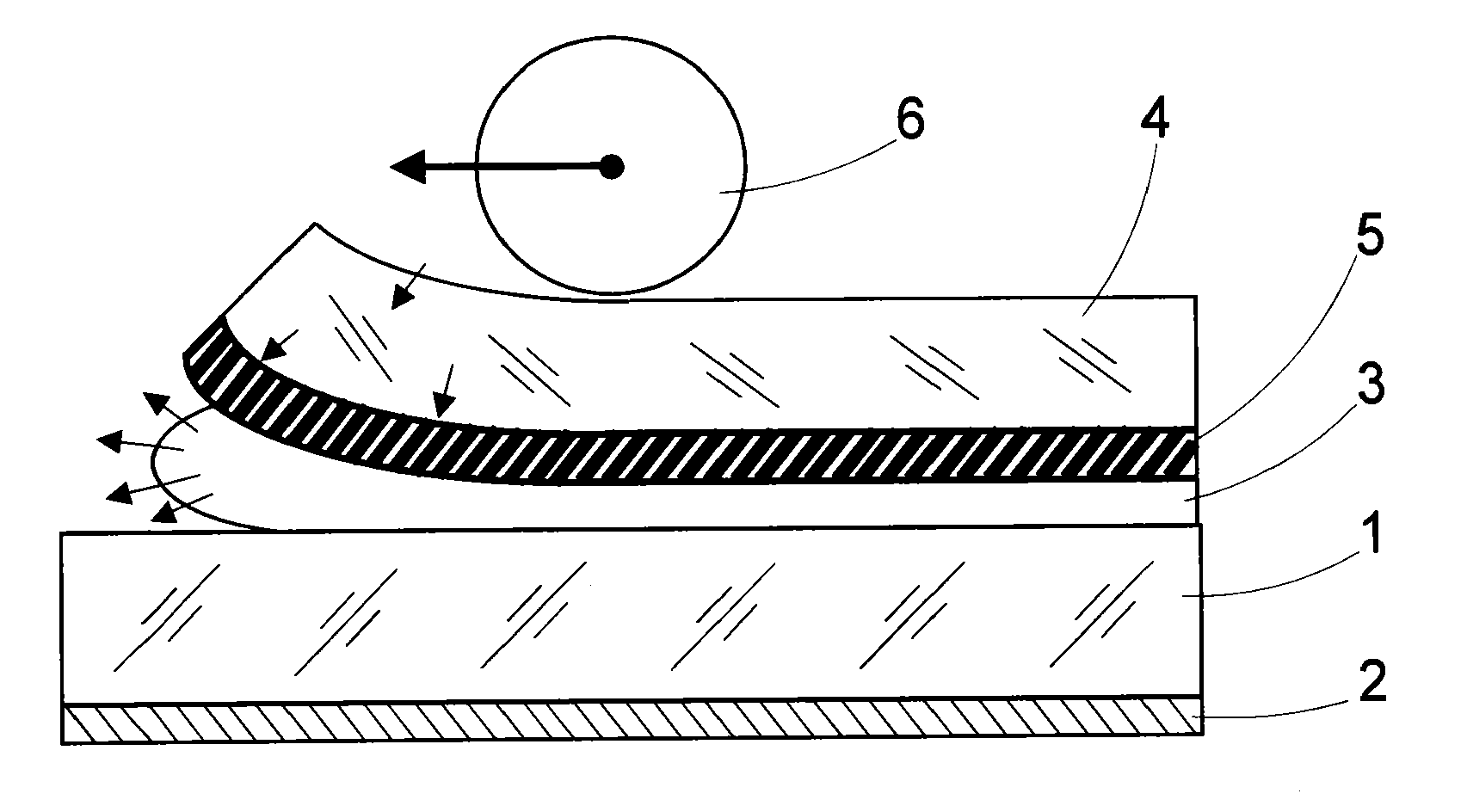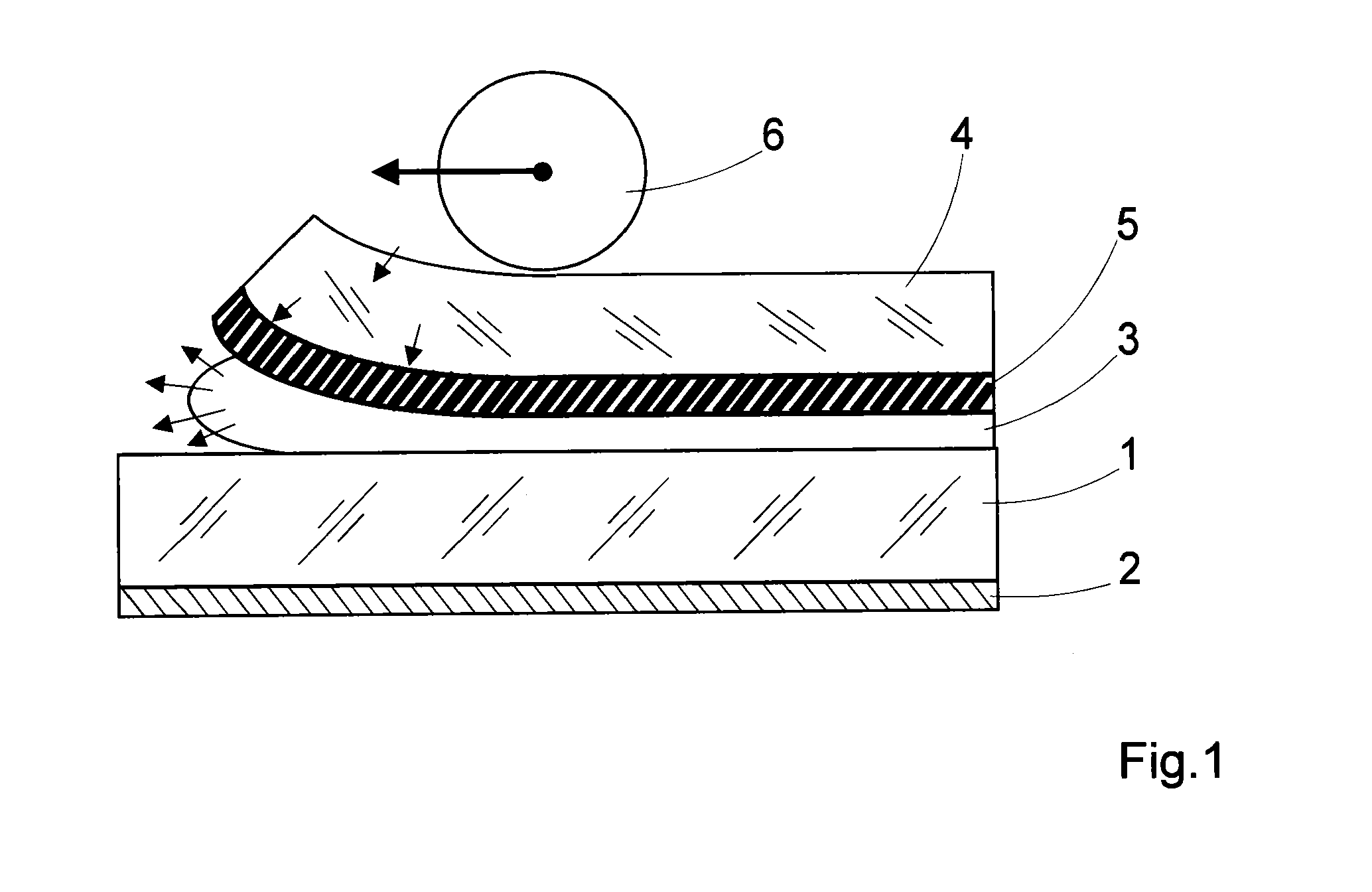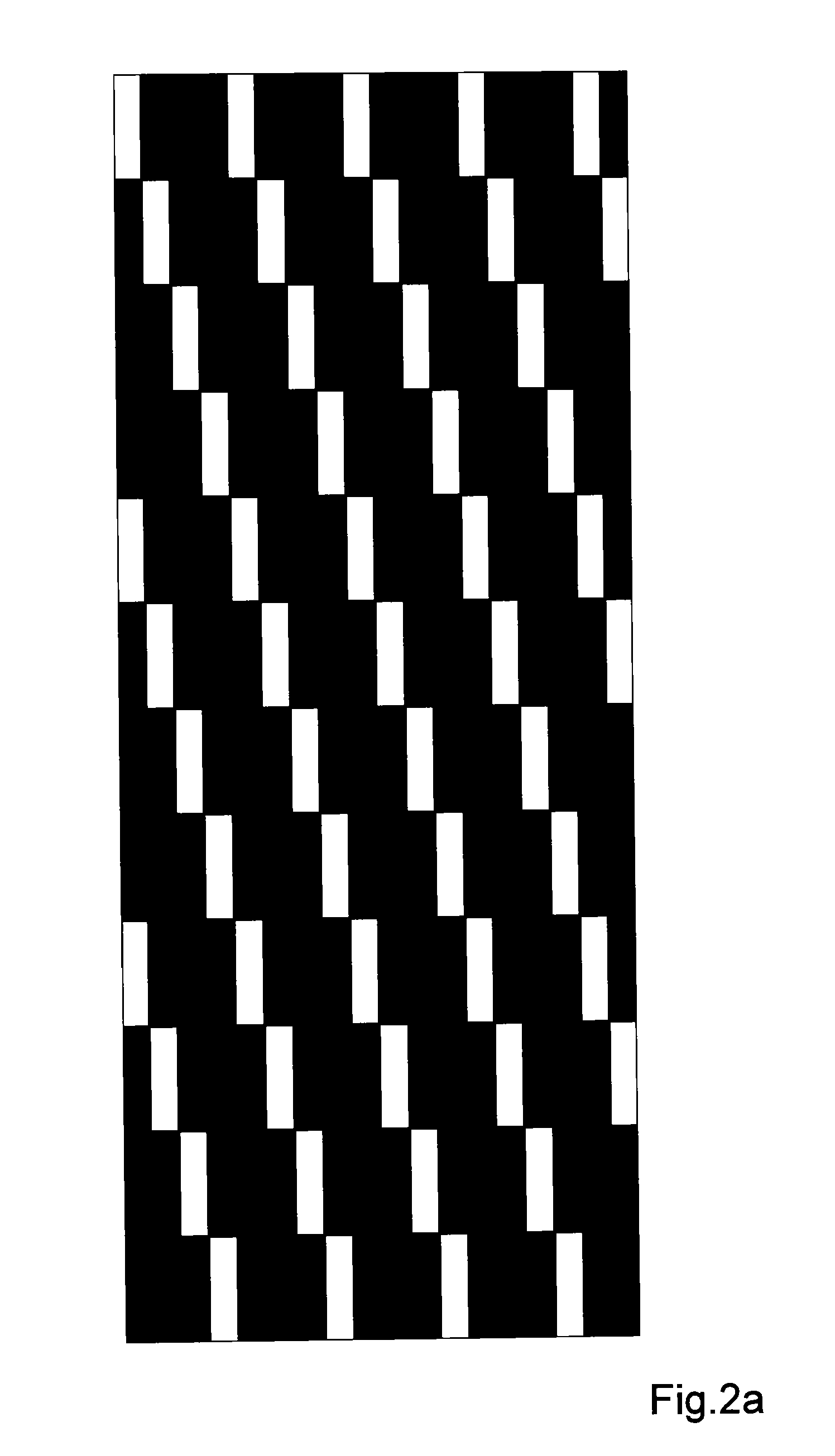Method for applying optical filter structures onto a carrier substrate
a technology of optical filter structure and carrier substrate, which is applied in the direction of colour screen additive process, optical elements, instruments, etc., can solve the problems of unserviceable filter, slight distortion or tensile strain of film especially in the rolling direction, and impairment of the optical action of the filter structure, so as to achieve simple and reliable application of optical filter structure, less susceptible to faults, and easy handling
- Summary
- Abstract
- Description
- Claims
- Application Information
AI Technical Summary
Benefits of technology
Problems solved by technology
Method used
Image
Examples
Embodiment Construction
[0037]Described below are methods with which optical filter structures—for example, barrier filters for three-dimensional display—may be applied onto a substrate transparent to light at least in the visible wavelength range. FIG. 1 illustrates the essential elements that play a part in the process step explained further below. The substrate 1 may be glass, which, as a rule, has the form of a planar, rectangular solid. Here, the bottom side of substrate 1 is provided with an antireflection coating 2; this coating is, however, not absolutely necessary but is only provided for comfortable viewing. An adhesive 3 is applied onto the top side of substrate 1. The adhesive 3 may be a viscous adhesive consisting of monomers, which polymerize and cure under irradiation with ultraviolet light.
[0038]In the process step illustrated in FIG. 1, a photographic film comprising a base film 4 and a photographic emulsion layer 5 applied on the base film is brought into contact with the adhesive 3 so th...
PUM
| Property | Measurement | Unit |
|---|---|---|
| contact pressure | aaaaa | aaaaa |
| contact pressure | aaaaa | aaaaa |
| thickness | aaaaa | aaaaa |
Abstract
Description
Claims
Application Information
 Login to View More
Login to View More - R&D
- Intellectual Property
- Life Sciences
- Materials
- Tech Scout
- Unparalleled Data Quality
- Higher Quality Content
- 60% Fewer Hallucinations
Browse by: Latest US Patents, China's latest patents, Technical Efficacy Thesaurus, Application Domain, Technology Topic, Popular Technical Reports.
© 2025 PatSnap. All rights reserved.Legal|Privacy policy|Modern Slavery Act Transparency Statement|Sitemap|About US| Contact US: help@patsnap.com



